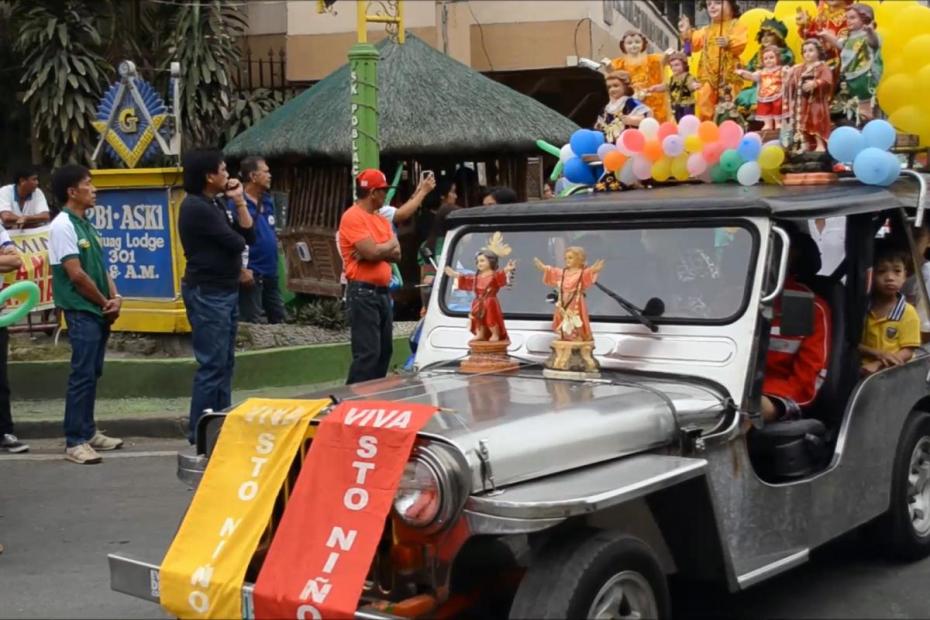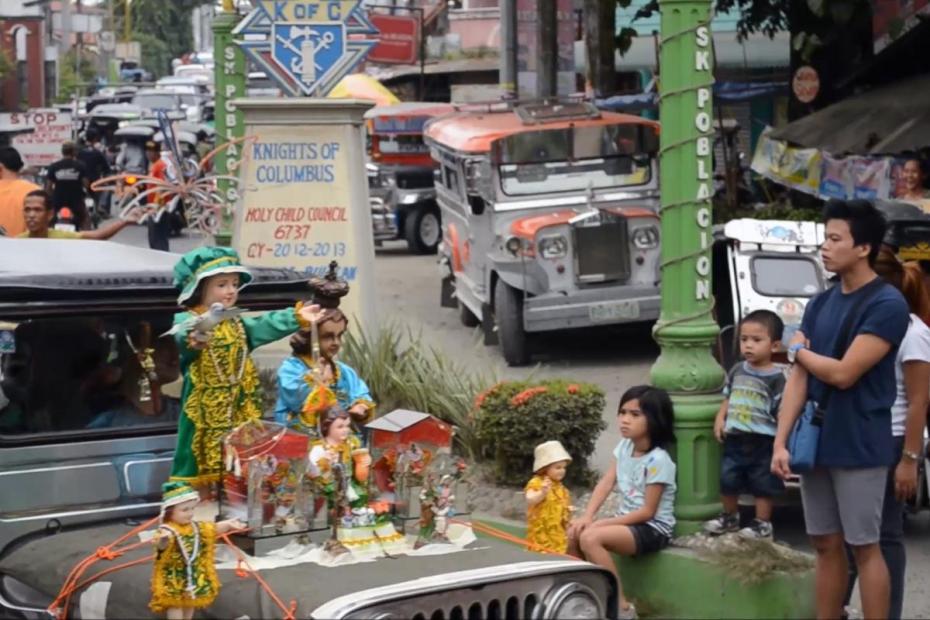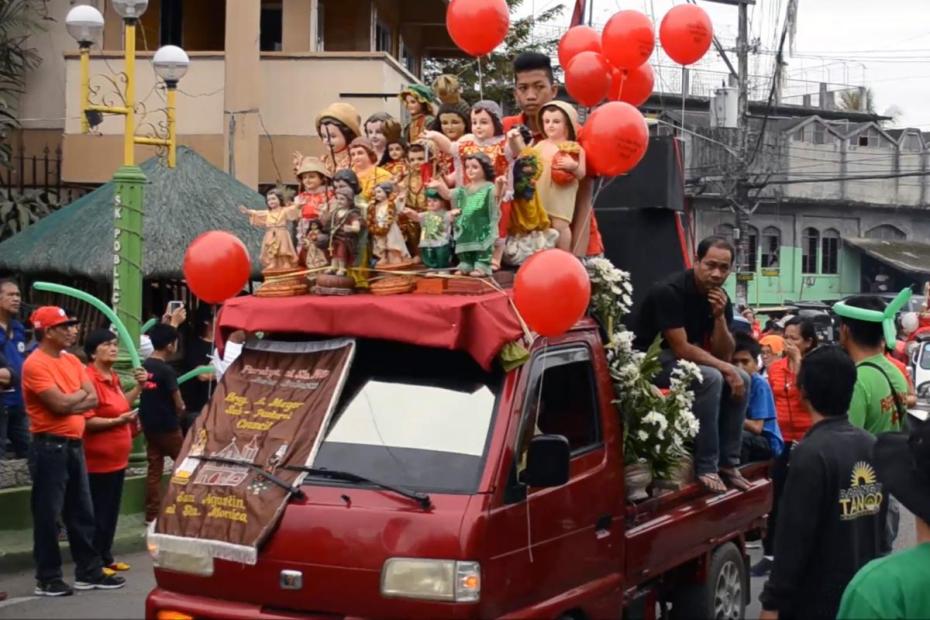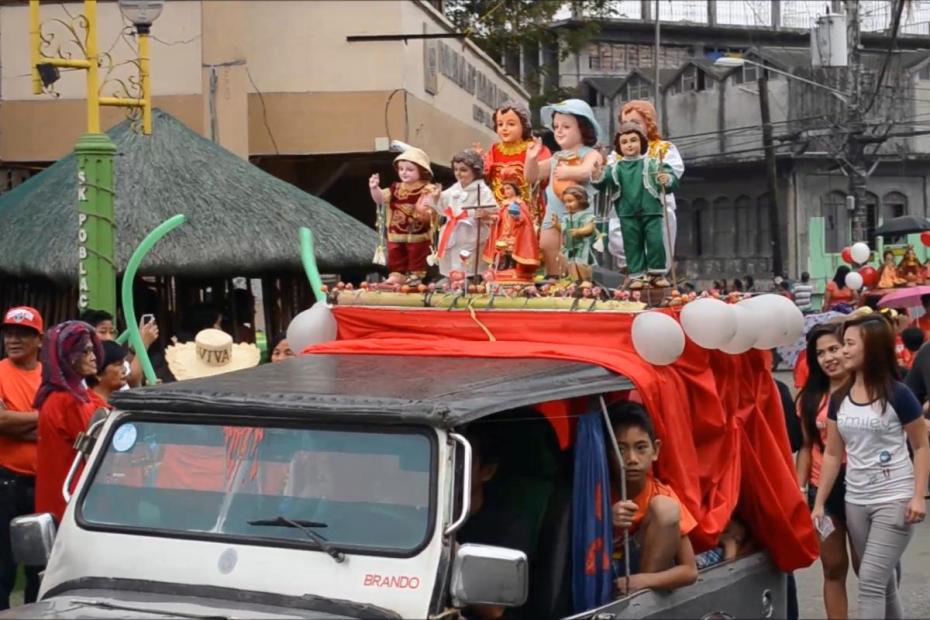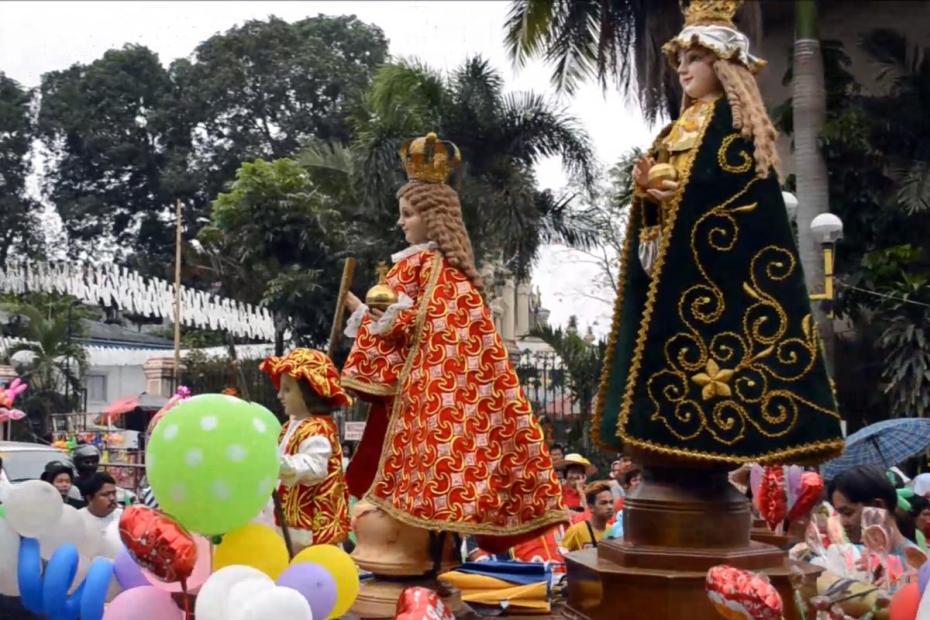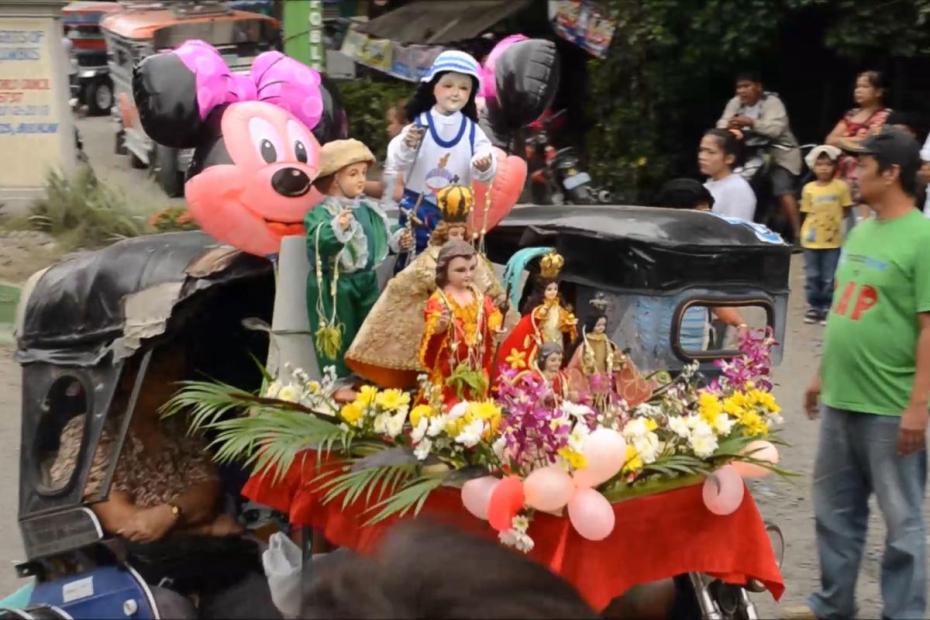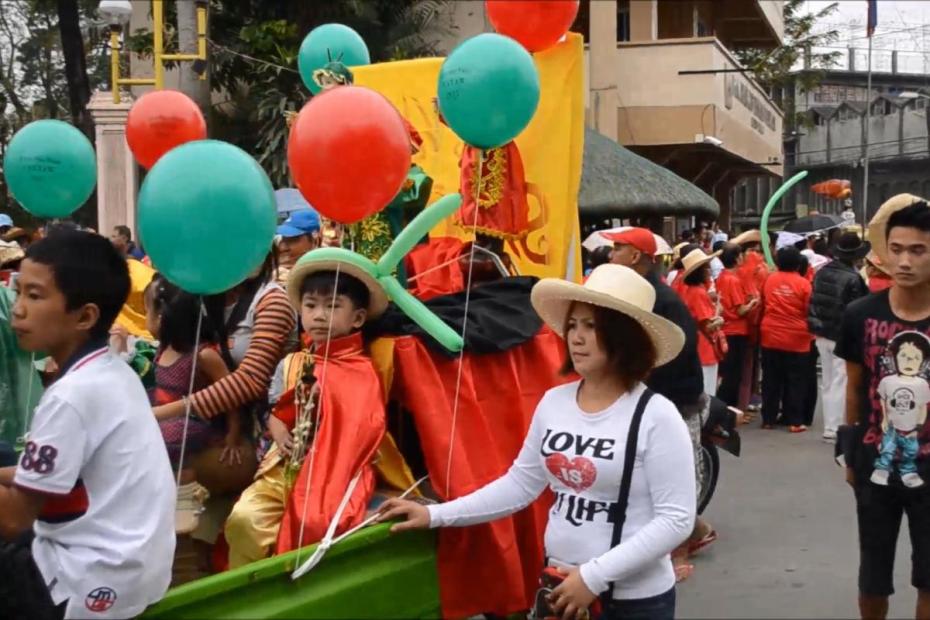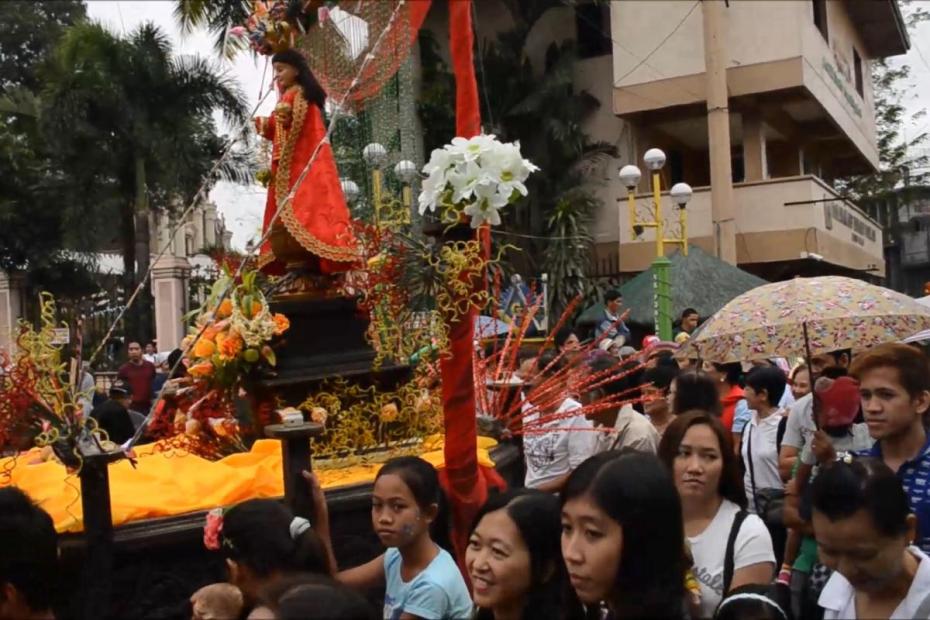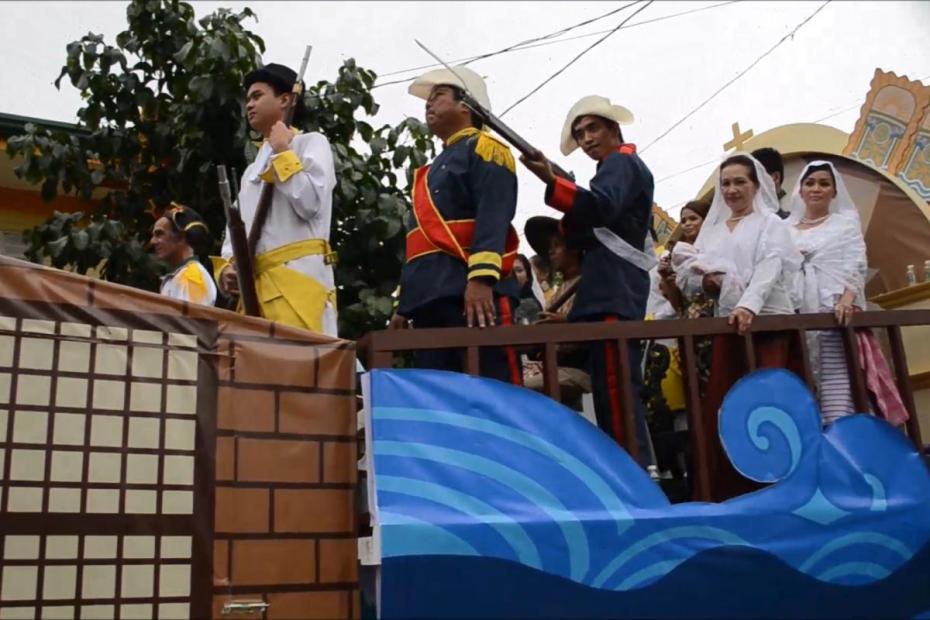Like other towns and cities in the Philippines, Bustos, a municipality about 50 km north of Manila, publicly celebrates a number of Catholic feasts throughout the year, for parish and barangay patrons, for Mary, and for holy week. Since its founding in the mid-19th century, Bustos’ first parish church has been dedicated to the Santo Niño, the Holy Child Jesus, so that feast, while not as grand as in nearby Malolos, is important to townspeople.
As befits the status of the Santo Niño, the feast begins nine days earlier, with a series of daily novena Masses leading up to the actual feast day, on the third Sunday of January.
For years the feast day was celebrated with a simple procession followed by morning high Mass. In 1996, a new pastor, Fr. Mario Mendiolahe, turned the procession into a tugyaw, a larger procession that used awit and sayaw (song and dance) to transform the celebration. When the festival was observed in 2015 for this account, it is fair to say that there was a lot more music than dancing, but the celebratory nature of the event was obvious.
The procession included thousands of small and medium images of Santo Niño from the homes of parishioners. Seemingly every family’s image — a few on elegant carozas decorated with flowers and lights, but most mass-produced, riding on cars or motorcycle three-wheelers decorated with balloons, dressed in a range of ways — had a chance to be carried on vehicle or in someone’s arms.
Through much of the procession, dance-club style music blared, sometimes in forms that built on traditional drumming, but added a contemporary twist. Other loudspeakers mounted on vehicles used the music of Sinulog, Cebu’s huge Santo Niño feast, or simply blared pop music. In sharp contrast to Lenten penitential rituals, Santo Niño events were meant to be joyful and celebratory.
Feast of Santo Niño procession in Bustos, Bulacan, January 18, 2015.
